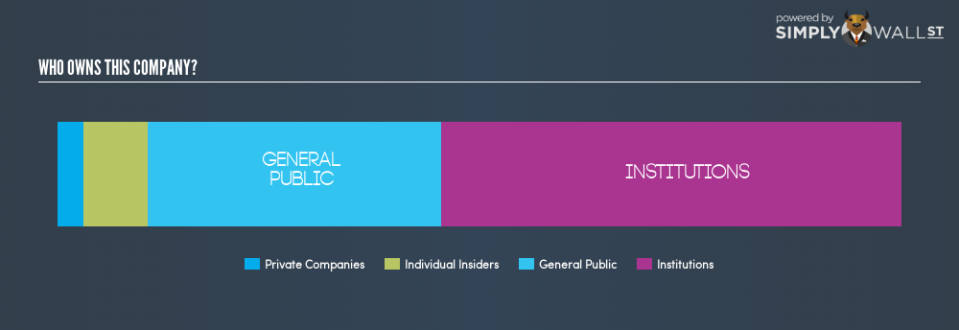Who Are The Major Shareholders In carsalescom Ltd (ASX:CAR)?

In this article, I’m going to take a look at carsalescom Ltd’s (ASX:CAR) latest ownership structure, a non-fundamental factor which is important, but remains a less discussed subject among investors. A company’s ownership structure is often linked to its share performance in both the long- and short-term. Since the same amount of capital coming from an activist institution and a passive mutual fund has different implications on corporate governance, it is a useful exercise to deconstruct CAR’s shareholder registry.
View our latest analysis for carsales.com
Institutional Ownership
Institutions account for 54.48% of CAR’s outstanding shares, a significant enough holding to move stock prices if they start buying and selling in large quantities, especially when there are relatively small amounts of shares available on the market to trade. Although CAR has a high institutional ownership, such stock moves, in the short-term, are more commonly linked to a particular type of active institutional investors – hedge funds. In the case of CAR, investors need not worry about such volatility considering active hedge funds don’t have a significant stake. However, we should dig deeper into CAR’s ownership structure and find out how other key ownership classes can affect its investment profile.
Insider Ownership
Insiders form a group of important ownership types as they manage the company’s operations and decide the best use of capital. Insider ownership has been linked to better alignment between management and shareholders. With 7.57% ownership, CAR insiders is an important ownership type. This level of stake with insiders indicate highly aligned interests of shareholders and company executives. It may be interesting to see what insiders have been doing with their shares lately. Insiders buying shares can be a positive indicator of future performance, but a selling decision can be simply driven by personal financial needs.
General Public Ownership
A big stake of 34.72% in CAR is held by the general public. This size of ownership gives retail investors collective power in deciding on major policy decisions such as executive compensation, appointment of directors and acquisitions of businesses.
Private Company Ownership
Another important group of owners for potential investors in CAR are private companies that hold a stake of 3.23% in CAR. These are companies that are mainly invested due to their strategic interests or are incentivized by reaping capital gains on investments their shareholdings. However, an ownership of this size may be relatively insignificant, meaning that these shareholders may not have the potential to influence CAR’s business strategy. Thus, investors not need worry too much about the consequences of these holdings.
Next Steps:
The company’s high institutional ownership makes margin of safety a very important consideration to existing investors since long bull and bear trends often emerge when these big-ticket investors see a change in long-term potential of the company. This will enable shareholders to comfortably invest in the company while avoid getting trapped in a sustained sell-off that is often observed in stocks with this level of institutional participation. However, ownership structure should not be the only determining factor when you’re building an investment thesis for CAR. Instead, you should be evaluating company-specific factors such as the intrinsic valuation, which is a key driver of carsales.com’s share price. I highly recommend you to complete your research by taking a look at the following:
Future Outlook: What are well-informed industry analysts predicting for CAR’s future growth? Take a look at our free research report of analyst consensus for CAR’s outlook.
Past Track Record: Has CAR been consistently performing well irrespective of the ups and downs in the market? Go into more detail in the past performance analysis and take a look at the free visual representations of CAR’s historicals for more clarity.
Other High-Performing Stocks: Are there other stocks that provide better prospects with proven track records? Explore our free list of these great stocks here.
NB: Figures in this article are calculated using data from the last twelve months, which refer to the 12-month period ending on the last date of the month the financial statement is dated. This may not be consistent with full year annual report figures.
To help readers see past the short term volatility of the financial market, we aim to bring you a long-term focused research analysis purely driven by fundamental data. Note that our analysis does not factor in the latest price-sensitive company announcements.
The author is an independent contributor and at the time of publication had no position in the stocks mentioned. For errors that warrant correction please contact the editor at editorial-team@simplywallst.com.

